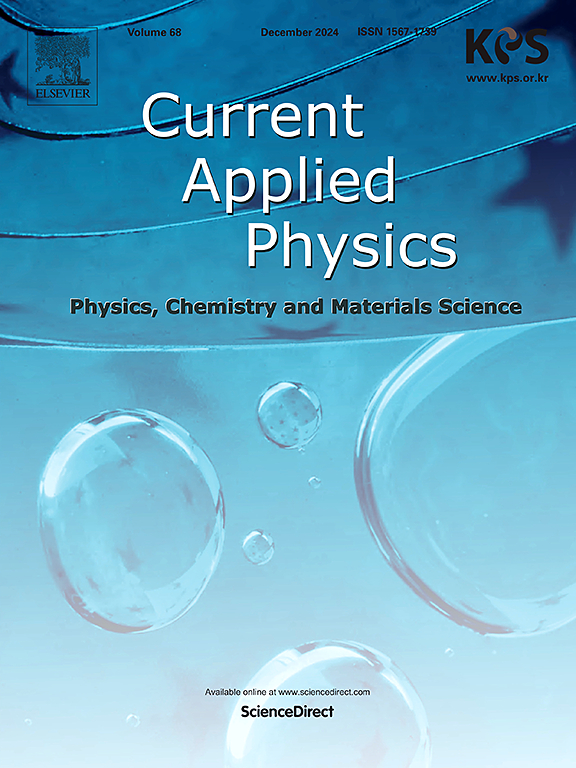Magnetic properties of van der Waals ferromagnet Fe3GeTe2 nanosheets grown by flux-assisted growth
IF 2.4
4区 物理与天体物理
Q3 MATERIALS SCIENCE, MULTIDISCIPLINARY
引用次数: 0
Abstract
Among two-dimensional (2D) van der Waals (vdW) materials, Fe3GeTe2 (FGT), a 2D vdW ferromagnetic material, has gained significant interest due to its high Curie temperature and perpendicular magnetic anisotropy. Despite the difficulties in fabricating high-quality crystals, the flux-assisted growth (FAG) method has recently emerged as a promising technique for synthesizing 2D vdW materials. In this study, we employed the FAG method to fabricate crystalline FGT nanosheets under varied growth parameters. Magneto-optical Kerr effect (MOKE) measurements revealed that the FGT nanosheets exhibit perpendicular magnetic anisotropy with a Curie temperature of 222 K. Additionally, the MOKE data indicate the presence of exchange bias phenomena, likely due to the FeO phase associated with oxidized FGT surface. These findings enhance our understanding of the fundamental physics of FGT nanosheets and contribute to the advancement of diverse 2D magnetic device applications.

范德华铁磁体Fe3GeTe2纳米片的磁特性
在二维(2D)范德华(vdW)材料中,Fe3GeTe2 (FGT)是一种二维范德华(vdW)铁磁材料,由于其高居里温度和垂直磁各向异性而引起了人们的极大兴趣。尽管在制造高质量晶体方面存在困难,但近年来,通量辅助生长(FAG)方法已成为合成二维vdW材料的一种很有前途的技术。在这项研究中,我们采用FAG方法在不同的生长参数下制备了晶体FGT纳米片。磁光克尔效应(MOKE)测量表明,FGT纳米片在居里温度为222 K时表现出垂直的磁各向异性。此外,MOKE数据表明存在交换偏置现象,可能是由于与氧化FGT表面相关的FeO相。这些发现增强了我们对FGT纳米片基本物理的理解,并有助于推进各种二维磁性器件的应用。
本文章由计算机程序翻译,如有差异,请以英文原文为准。
求助全文
约1分钟内获得全文
求助全文
来源期刊

Current Applied Physics
物理-材料科学:综合
CiteScore
4.80
自引率
0.00%
发文量
213
审稿时长
33 days
期刊介绍:
Current Applied Physics (Curr. Appl. Phys.) is a monthly published international journal covering all the fields of applied science investigating the physics of the advanced materials for future applications.
Other areas covered: Experimental and theoretical aspects of advanced materials and devices dealing with synthesis or structural chemistry, physical and electronic properties, photonics, engineering applications, and uniquely pertinent measurement or analytical techniques.
Current Applied Physics, published since 2001, covers physics, chemistry and materials science, including bio-materials, with their engineering aspects. It is a truly interdisciplinary journal opening a forum for scientists of all related fields, a unique point of the journal discriminating it from other worldwide and/or Pacific Rim applied physics journals.
Regular research papers, letters and review articles with contents meeting the scope of the journal will be considered for publication after peer review.
The Journal is owned by the Korean Physical Society.
 求助内容:
求助内容: 应助结果提醒方式:
应助结果提醒方式:


